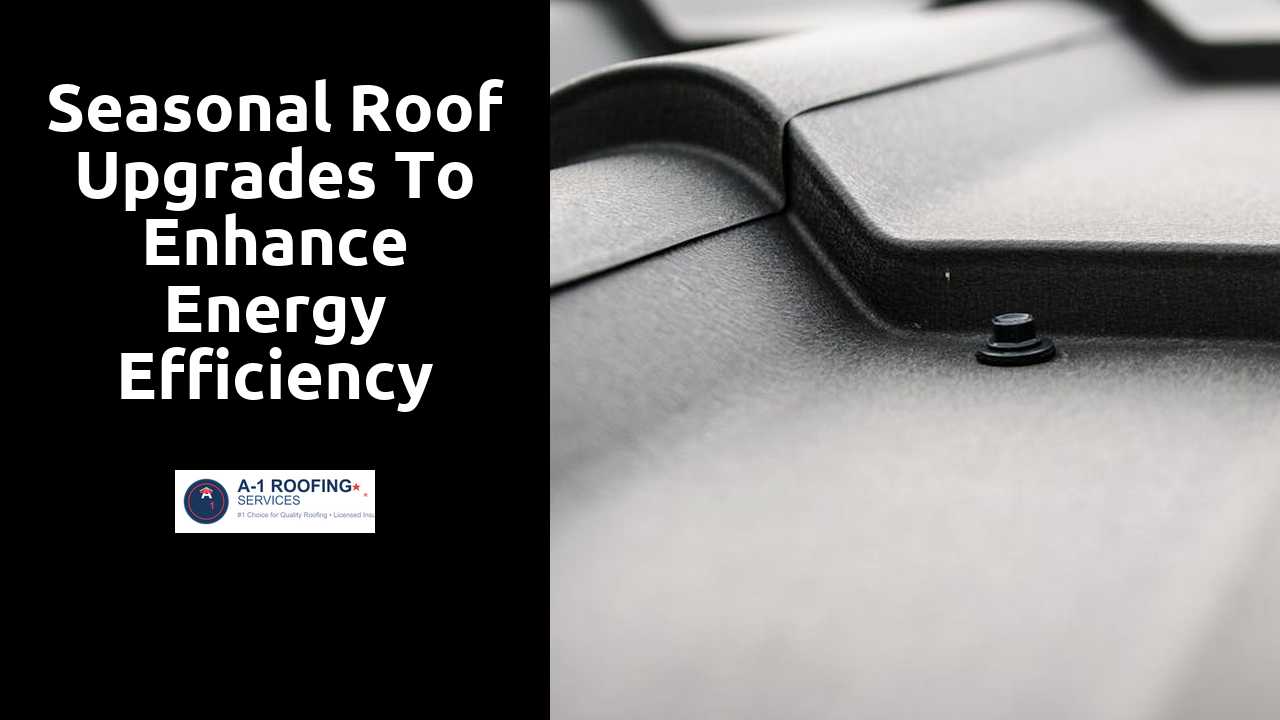
Seasonal Roof Upgrades to Enhance Energy Efficiency
Table Of Contents
Gutter Maintenance and Upgrades
Regular maintenance of gutters is essential for ensuring effective water management around the home. Clogged or damaged gutters can lead to water overflow, which may cause significant structural damage to both the roof and the foundation over time. Examining gutters for debris buildup, rust, or signs of wear can help maintain their functionality. Homeowners should consider cleaning gutters at least twice a year, particularly before the onset of heavy rain or snowfall.
Upgrading gutters can enhance both performance and longevity. Installing high-quality materials can improve resistance to corrosion and wear. Additionally, opting for larger downspouts or incorporating a gutter guard system can help prevent future clogs. These upgrades not only boost efficiency but also contribute to overall energy savings by reducing the likelihood of water damage that could affect insulation and energy performance in colder months.
Hop over here to discover more.
Importance of Effective Water Management
Proper water management plays a crucial role in maintaining the longevity and efficiency of a roof. Effective drainage systems prevent water accumulation, which can lead to leaks, mold growth, and structural damage. Regular maintenance of gutters and downspouts ensures they remain clear and functional, directing water away from the roof and foundation. This proactive approach helps homeowners avoid costly repairs and extends the lifespan of roofing materials.
In addition to preventing damage, effective water management contributes to overall energy efficiency. A roof that effectively channels water eliminates the risk of dampness, which can compromise insulation. This results in more stable indoor temperatures and reduced energy consumption. By investing in water management solutions, homeowners can create a more comfortable living environment while also enhancing the roof's performance.
Upgrading to Cool Roof Technology
Innovative roofing solutions have emerged to combat rising temperatures and improve energy efficiency. Cool roof technology involves the installation of materials that reflect more sunlight and absorb less heat. These roofs can be made from specially coated shingles or reflective tiles, which contribute significantly to maintaining lower interior temperatures. Homeowners who invest in this technology may experience reduced reliance on air conditioning, leading to lower energy bills.
Moreover, the environmental benefits of cool roof technology extend beyond individual households. By reducing the urban heat island effect, these roofs help lower overall city temperatures, promoting a healthier living environment. Enhanced energy performance can also qualify properties for green certifications, which may increase market value. Implementing cool roof systems represents a practical and forward-thinking approach to sustainable building practices.
Benefits of Reflective Roofing Materials
Reflective roofing materials offer significant advantages when it comes to energy efficiency. These materials can drastically reduce the amount of heat absorbed by a building. By reflecting sunlight rather than absorbing it, they help maintain cooler indoor temperatures. This translates into lower energy costs, as less air conditioning is needed during the hot months. Homes and commercial buildings can benefit greatly from this technology, especially in regions with intense summer heat.
In addition to energy savings, reflective roofs can contribute to improved indoor comfort. They help regulate temperature fluctuations within the building, creating a more stable environment. Moreover, these materials can extend the lifespan of the roof itself, as reduced heat can minimize thermal expansion and contraction. Such longevity not only lessens the need for frequent replacements but also contributes to sustainability efforts by reducing waste in roofing materials.
Assessing and Repairing Roof Damage
Regular inspection of the roof is essential to identifying any damage that may compromise its integrity. Homeowners should conduct visual assessments both from the ground and from a safe vantage point on a ladder. Look for missing shingles, cracks, or any signs of wear and tear. Pay attention to the flashing around chimneys, vents, and skylights as these areas are susceptible to leaks. Early detection of issues can prevent more extensive damage and save on future repair costs.
Addressing identified issues promptly is crucial in maintaining the overall health of your roof. Small leaks can quickly turn into significant problems if left unattended. Repair techniques vary based on the type of damage. For example, cracked shingles can often be replaced individually, while widespread damage may necessitate a larger section of the roof being resurfaced. Engaging a professional roof inspector can provide insights and ensure that all repairs meet safety and building standards.
Identifying Issues Before Seasonal Changes
Regular roof inspections are essential to maintaining the integrity and efficiency of your home. Seasonal changes can exacerbate existing issues like cracks, leaks, or missing shingles. Detecting these problems early allows for timely repairs, preventing more extensive damage and costly repairs down the line. During an inspection, homeowners should also check for signs of mold or moss growth, which can signal moisture retention and compromise the roof's longevity.
In addition to visual assessments, functionality tests can help identify larger concerns. Checking gutters and downspouts for blockages ensures that water flows effectively off the roof. It is equally important to inspect flashing around chimneys and vents, as faulty seals can lead to leaks during heavy rain or snow. Addressing these issues proactively can maintain energy efficiency and extend the lifespan of your roof.
Related Links
How Weather Patterns Affect Your Roof's LongevitySpringtime Roof Care Essentials to Prevent Damage